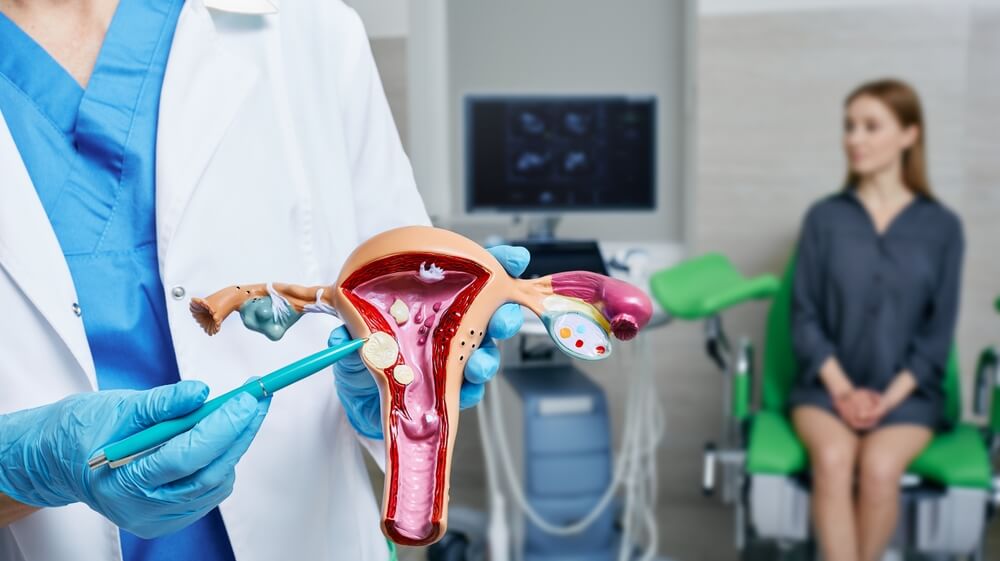Fibroid Removal Without Surgery: Exploring Non-Invasive Treatment Options

Living with uterine fibroids can feel overwhelming. Whether it’s the heavy periods, persistent pain, or the pressure on the bladder that keeps you running to the bathroom throughout the day, you’ve probably wondered if there’s a way to treat fibroids without facing surgery.
It’s a common question, and you’re not alone. Many women worry about how surgery might impact their bodies and long-term health, which is why more and more are exploring non-invasive fibroid treatment options.
And the good news? There are several options. Surgery isn’t your only path to relief.
Let’s take a look at the latest non-surgical treatments available. This will help you understand how they work, the benefits they offer, and what you can expect. By doing so, you can feel more confident in your options and know what questions to ask when considering your fibroid treatment.
Minimally Invasive Alternatives for Fibroid Removal
Advances in medical technology have opened up a variety of non-invasive and minimally invasive procedures that can effectively shrink or eliminate uterine fibroids—without the need for a lengthy recovery or large incisions.
Uterine Fibroid Embolization (UFE) and other minimally invasive fibroid treatments provide a way to relieve fibroid symptoms while keeping your body’s natural functions intact, giving you peace of mind and more control of your health. Each offers a unique approach to relieving symptoms and improving your quality of life.
Uterine Fibroid Embolization (UFE)
Also known as Uterine Artery Embolization, Uterine Fibroid Embolization (UFE) is a minimally invasive procedure that effectively shrinks uterine fibroids by cutting off their blood supply. During UFE, your doctor inserts a tiny catheter into your wrist or groin and uses real-time X-ray imaging to guide it to the uterine arteries. Once in place, they release harmless embolic particles to block the blood vessels feeding the fibroids, causing them to shrink significantly over time. Over the weeks and months following the procedure, most women experience significant relief from symptoms such as heavy bleeding and pelvic pain.
The benefits of Uterine Fibroid Embolization over traditional surgery to treat fibroids are clear:
- No large incisions
- No need for general anesthesia
- A quicker recovery time, with most women returning to normal activities within a week
- Preserves the uterus for future pregnancies
- Performed on an outpatient basis with no long hospital stays
MRgFUS (Magnetic Resonance-guided Focused Ultrasound)
MRgFUS, or Magnetic Resonance-guided Focused Ultrasound, is a non-invasive procedure that uses focused ultrasound waves to heat and destroy fibroid tissues. Guided by MRI imaging, doctors can treat uterine fibroids without damaging surrounding tissues. The focused ultrasound waves cause the fibroid cells to heat up and break down, gradually reducing fibroid size.
While MRgFUS has its advantages, it’s important to note that its role is often considered investigational by insurance companies and other medical entities. It is not widely utilized and therefore data is still limited. It is also limited to smaller uterine fibroids and may not be suitable for women with multiple or large uterine fibroids. However, MRgFUs may offer a promising alternative to surgery for women looking for a non-invasive option in the future.
Radiofrequency Ablation (Acessa)
Radiofrequency ablation—commonly referred to by the brand name Acessa—is a minimally invasive procedure that uses radiofrequency energy to destroy fibroid tissue. During the procedure, the doctor makes a small incision and inserts a specialized device to apply controlled heat directly to the uterine fibroids. The heat destroys the fibroid tissue, which is then absorbed by the body over time, leading to reduced symptoms.
Acessa is performed under general anesthesia. However, since the incisions are small, recovery is typically much faster than traditional surgery.
Acessa is still surgery, though a less invasive form. It is also not suitable for large or multiple fibroids.
Medications for Fibroid Management
In addition to non-surgical procedures, certain medications can help manage fibroid symptoms. While they may not eliminate uterine fibroids, they can provide temporary relief or help control the symptoms while you explore longer-term solutions. Here are some common medication options.
GnRH Agonists
These medications temporarily shrink fibroids by reducing estrogen and progesterone levels in your body. They can be effective in relieving heavy bleeding and shrinking fibroids before a procedure. However, long-term use can lead to menopause-like side effects. GnRH agonists are generally used for short-term management due to these side effects and are often used as a pre-treatment before surgery rather than a standalone treatment.

Progestin-Releasing Intrauterine Device (IUD)
While primarily used for contraception, a progestin-releasing IUD can help control heavy bleeding caused by uterine fibroids. It won’t shrink uterine fibroids, but it can provide relief from one of the most common symptoms.
Nonsteroidal Anti-Inflammatory Drugs (NSAIDs)
Over-the-counter NSAIDs like ibuprofen can help alleviate fibroid-related pain and discomfort. While they don’t affect the size of uterine fibroids, they can make day-to-day life more manageable.
Tranexamic Acid
This medication is often used to reduce heavy menstrual bleeding temporarily. It doesn’t shrink fibroids, but it helps manage one of their most disruptive symptoms by preventing excessive blood loss during your period.
Ideal Candidates for Non-Surgical Fibroid Removal
Non-surgical fibroid treatments are a great option for many women, but they aren’t necessarily the best choice for everyone. Women who may not be ideal candidates for these treatments include those with certain underlying health conditions, or fibroids that are unlikely to respond well to minimally invasive methods.
Ideal candidates for these minimally invasive procedures are typically women experiencing significant symptoms—like heavy menstrual bleeding, pelvic pain, or pressure—but who want to avoid the risks and recovery associated with surgery. Non-surgical options are especially appealing to women who value the following:
- Shorter recovery times
- Minimal scarring
- Preserving the uterus for future fertility
Additionally, women who have smaller to medium-sized fibroids or who have multiple fibroids but still want to retain their uterus are often excellent candidates for treatments like Uterine Fibroid Embolization. Non-surgical options work well for women seeking symptom relief without major disruptions to their lives or for those who may not be good candidates for surgery due to underlying health conditions.
It’s always important to discuss your personal goals and medical history with your doctor to determine which treatment will best meet your needs.
Take the Next Step Toward Relief Without Surgery
Dealing with fibroids can be overwhelming, but you don’t have to face it alone or settle for invasive surgery. Non-surgical treatments like Uterine Fibroid Embolization, MRgFUS, and radiofrequency ablation offer a way to reclaim your life without the long recovery times and risks of traditional procedures. With today’s advanced techniques, you can find relief from fibroid symptoms while keeping your body intact and getting back to your normal routine sooner.
At VIP Fibroid Center, we’re here to guide you through every step of your treatment journey with compassionate care and the latest non-invasive procedures. Our experienced team understands how fibroids can affect your life, and we’re committed to helping you find the right solution that works for you—without unnecessary surgery.
Contact our staff today or request your consultation to discover how our personalized, minimally invasive treatments can help you live free from fibroid symptoms.
